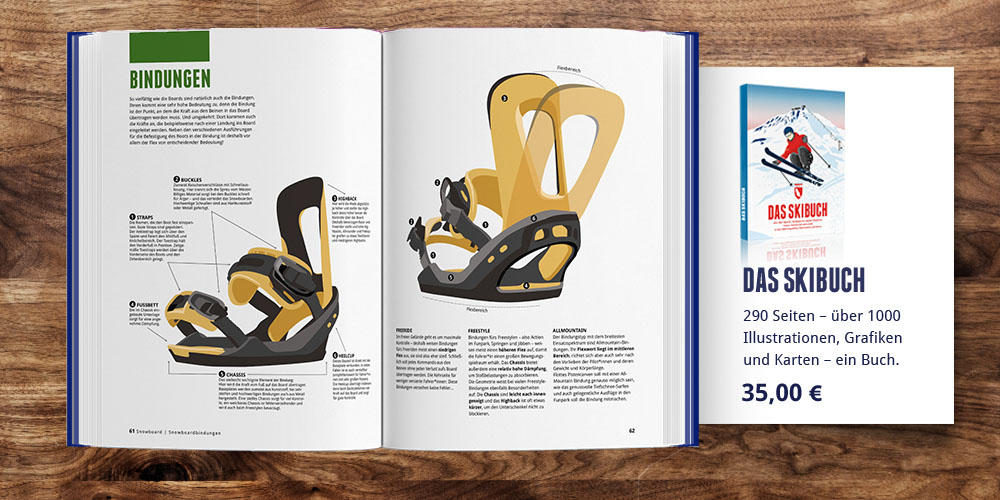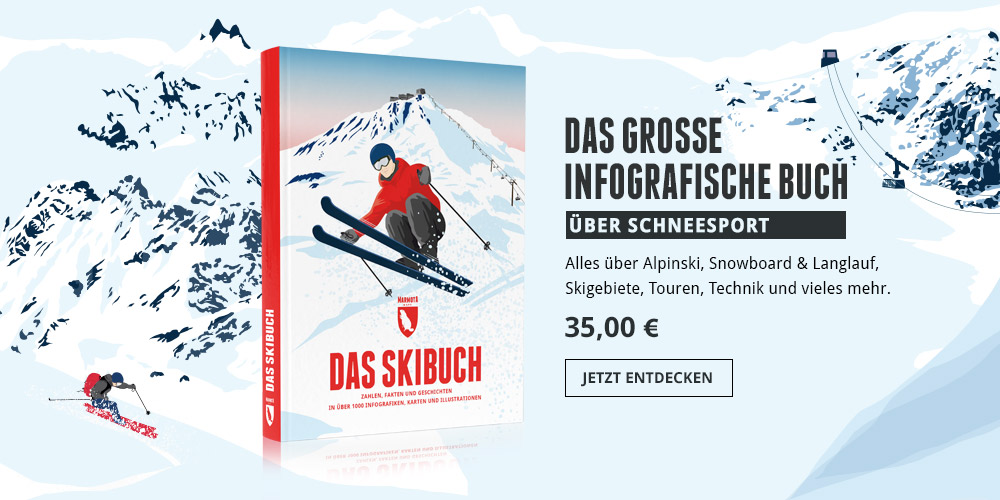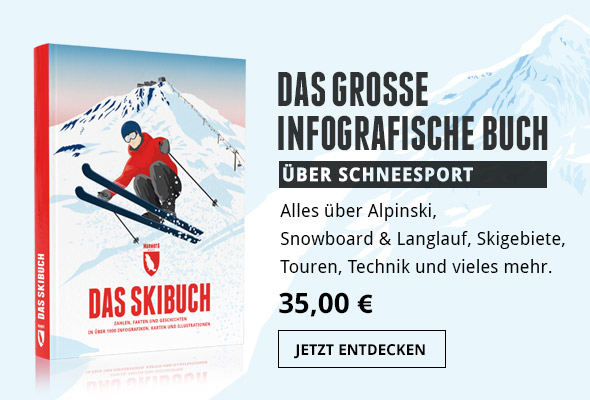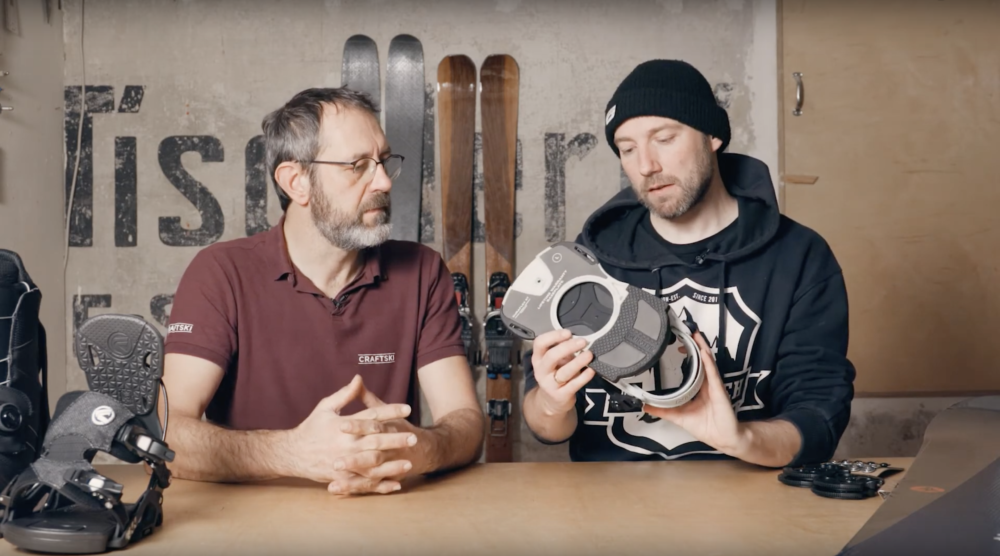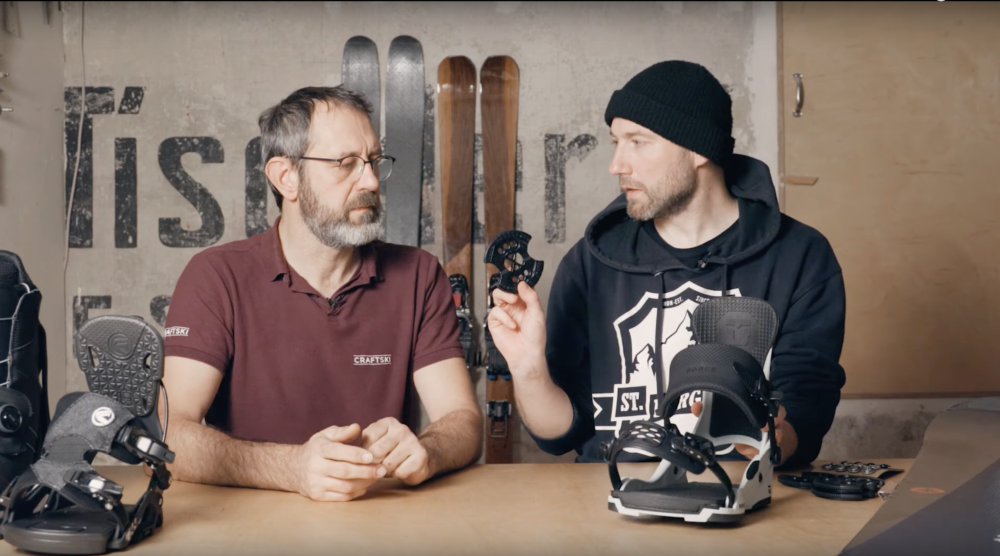Before you can go have fun with your new snowboard, there is one more important thing to check – the binding. Steffen Heycke of Craftski & Boards and Björn of St. Bergweh will show you the different types of bindings and what you need to know about them.
Strap in Bindings
The strap in bindings are the most common ones. In order to understand the differences between the bindings it is important to know what elements they typically consist of.
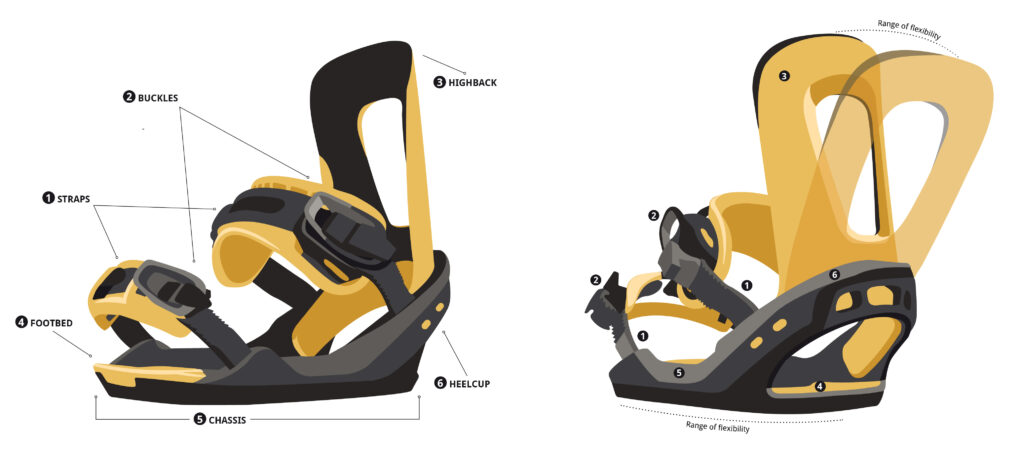
A regular strap in binding includes the base plate, heelcup and highback. The base plate is the basic element to which the boot gets attached to. The Heel Cup is located at the end of the base plate. From there the highback rises up to the lower calf and keeps the boot in place. The ankle and toes are supported by additional straps.
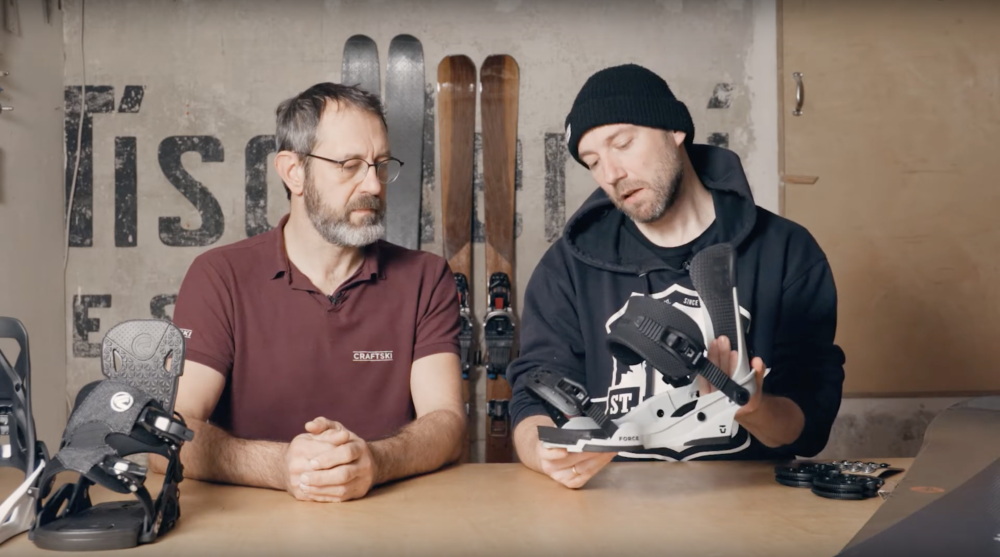
In these strap in bindings, it’s usually the elements on which the most tension is exerted that become weak spots, meaning it’s mainly the straps or ratchets that break first. However, these can get replaced easily in any snowboard shop and are generally independent from specific manufacturers. The other elements of a binding are usually very robust and sturdy.
Rear-Entry Bindings
In addition to the strap in bindings, there are others, such as the rear-entry bindings. The most famous manufacturer for this model is the brand Flow.
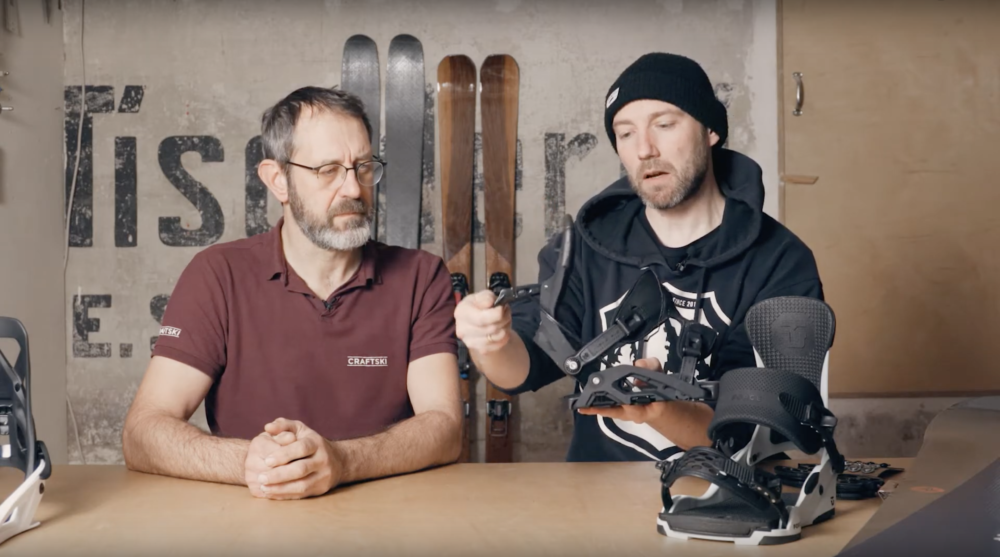
With this system, there is only a single strap at the front, so it only needs to be adjusted once. The strap is tightened until the boot is held in place. Then you can easily slide the boot in by opening the highback with a lever. This definitely adds a level of comfort since no strap tying with cold hands or gloves is needed. Especially for beginners this could be a great option.
A slight downside is that these bindings have fewer adjustment options and stability is lost due to the lack of a heel cup. This makes a rear-entry binding not suitable for big jumps on a kicker line, but for the classic piste run and a few tricks it’s definitely enough.
Burton Step-On Bindings
Burtons Step-On bindings are a new, technically well thought out system, that has neither straps, nor rear-entry. A few years ago Burton and some other manufacturers had the idea to develop a click system with a boot-to-binding connection. However, these could not prevail at the time for various reasons. A disadvantage is still that it’s not only more expensive than a regular binding but that it works exclusively in combination with the corresponding snowboard boots and there are no adapters for conventional boots, yet.
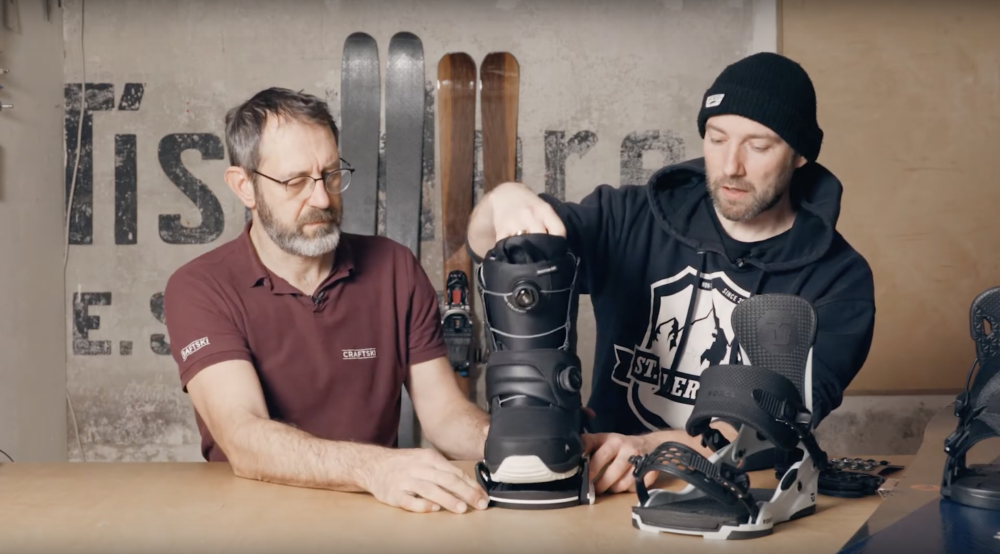
With the right boot, however, it is very convenient, because with just a little pressure, the shoe snaps easily into place and can be released just as simply with a small lever.
Overview of the types of bindings
The rear-entry binding is suitable for beginners but also for snowboarders who are a bit more experienced and want to ride black slopes or try simple jumps for example. However, if you want to improve your performance beyond that, you should consider switching to the classic strap in bindings. They offer additional elements for stabilization such as the heel cup and more adjustability, in terms of angle. In addition, these bindings are used by a variety of manufacturers, which means a greater assortment to pick from.
All ski resort of the Alps at one glance
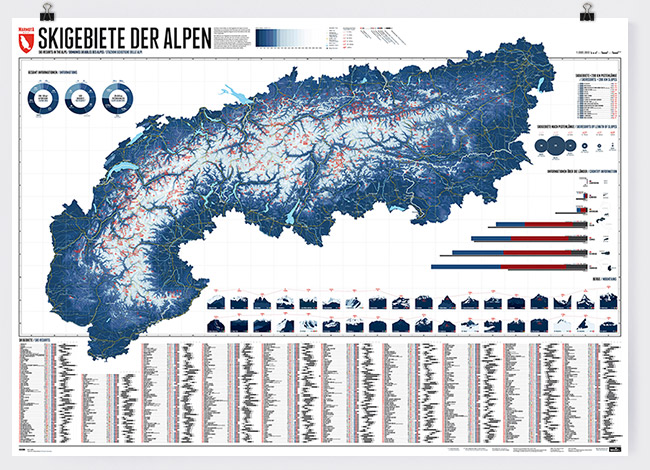
The most important performance-relevant differences and quality features
To know how good the quality of a binding is, it is best to look at it in a store and not just online. In the past, a metal ratchet was considered a sign of quality, but by now there are pretty good options made of plastic.
Also the base plate can differ in material such as plastic, PVC, aluminum or carbon. The material has an effect on the flexibility of the snowboard. The harder the base plate, the less flex the binding has to offer. A PVC plate for example has greater elasticity than one made of aluminum. The material doesn’t have an effect on the quality. Which one you want to choose depends on your riding style and what you want to use the snowboard for.
The rigidity of the highback also varies depending on the area of application. Freestyle bindings offer a softer highback, whereas a backcountry binding must provide more power transmission and greater stability.
Additionally, you can pay attention to the material on top of the base plate. The more support the boot has, the less the straps have to withstand the pull. The straps should also run over the toes and not over the instep.
The standard binding system vs. the channel system
Mounting the binding to the snowboard is largely standardized. On the underside of the base plate is a small hole into which a disc can be inserted. These discs have the same circumference, regardless of the system.
These discs allow you to adjust the angle of the binding. The hole system of the disc corresponds to the hole system of the board. There are two different systems:
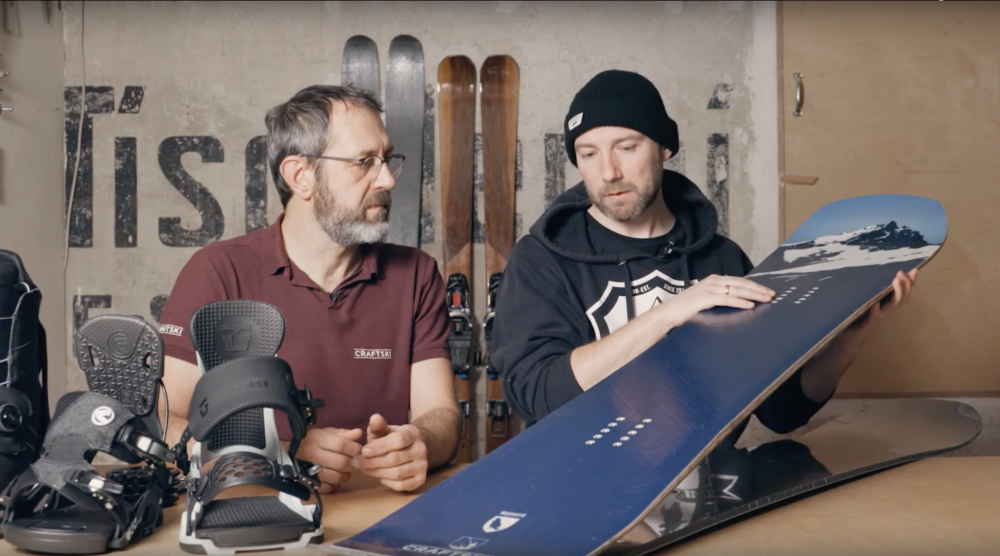
The standard system: It can be found in the majority of all boards. It usually is a ten or twelve hole system. The binding can be screwed on and the angle and stance can be changed.
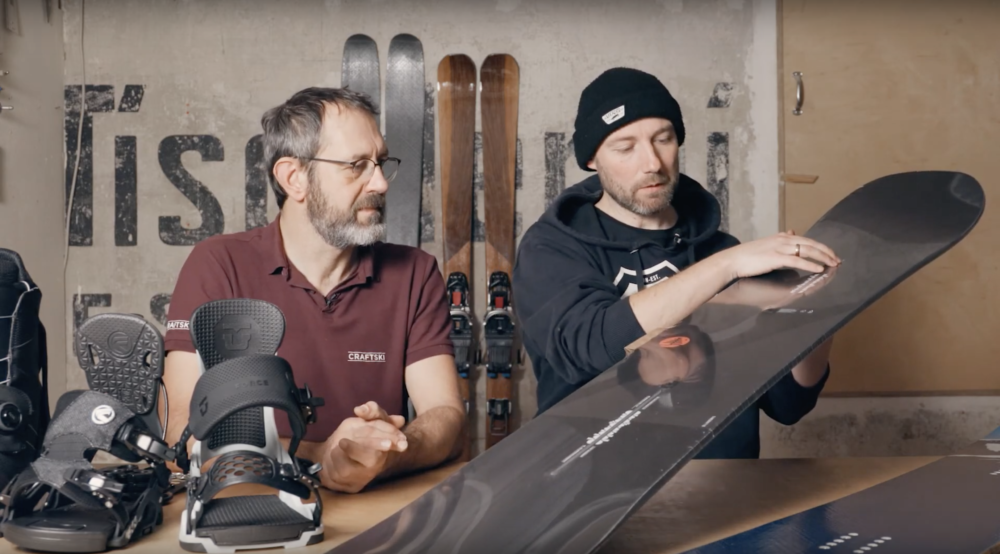
The channel system: It was introduced by Burton and has the advantage that you can quickly loosen the binding with a few screws, as well as change the angle and stance. This means the binding can even be adjusted on the slopes without having to unscrew it completely. However, by choosing this product, you are again strongly dependent on the manufacturer, although adapters exist.
How the binding is mounted and adjusted correctly, we have compiled in another video.
Find out even more about snowboarding and bindings with our new Ski Book
